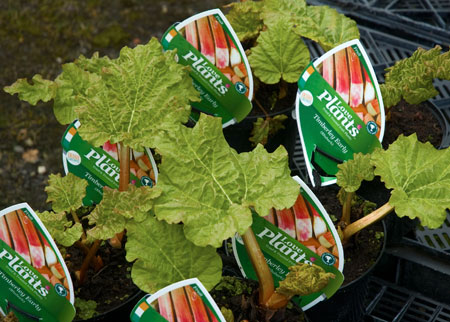
According to the late British journalist, musician and broadcaster Miles Kington, “Knowledge is knowing that a tomato is a fruit; wisdom is not putting it in a fruit salad.” Likewise, for those lovers of rhubarb, “Knowledge is knowing that rhubarb is a vegetable; wisdom is not boiling or steaming it to accompany your boiled bacon.”
Rhubarb is grown easily and widely, here in Ireland and now with greenhouse production it has become widely available in your local supermarket for much of each year.
Rhubarb is grown primarily for its fleshy pink/red stalks and is a comparatively recent food innovation. Rhubarb usage was first recorded here in Ireland in the 18th century, becoming more popular as a food possibly because sugar became more widely affordable and thus more easily available to the working classes.
This almost maintenance free food plant, enjoys sunshine and well-drained soil, containing organic matter. However, same will accept a more shaded area and if you have wet soil the use of a raised bed is highly recommended.
Here in Ireland, rhubarb stools can be found in most vegetable plots and gardens, and is used to make wine, but mostly in desserts e.g. Pies, Tarts, Crumbles, Sugar Syrup Compôte, often nowadays combined with whipped cream and yogurt to make Rhubarb Fool or that more common favourite Rhubarb & Custard.
Same rhubarb stalks are harvested from late April to May and again from late June into July.
Remember the green leaves of rhubarb do contain an abundance of oxalic acid and therefore same should not be consumed. However, nutrition wise, the fleshy rhubarb stalks themselves provide a good source of antioxidants, together with healthy amounts of vitamins K1, vitamin C, potassium, manganese, and are an excellent source of fibe.

Leave a Reply